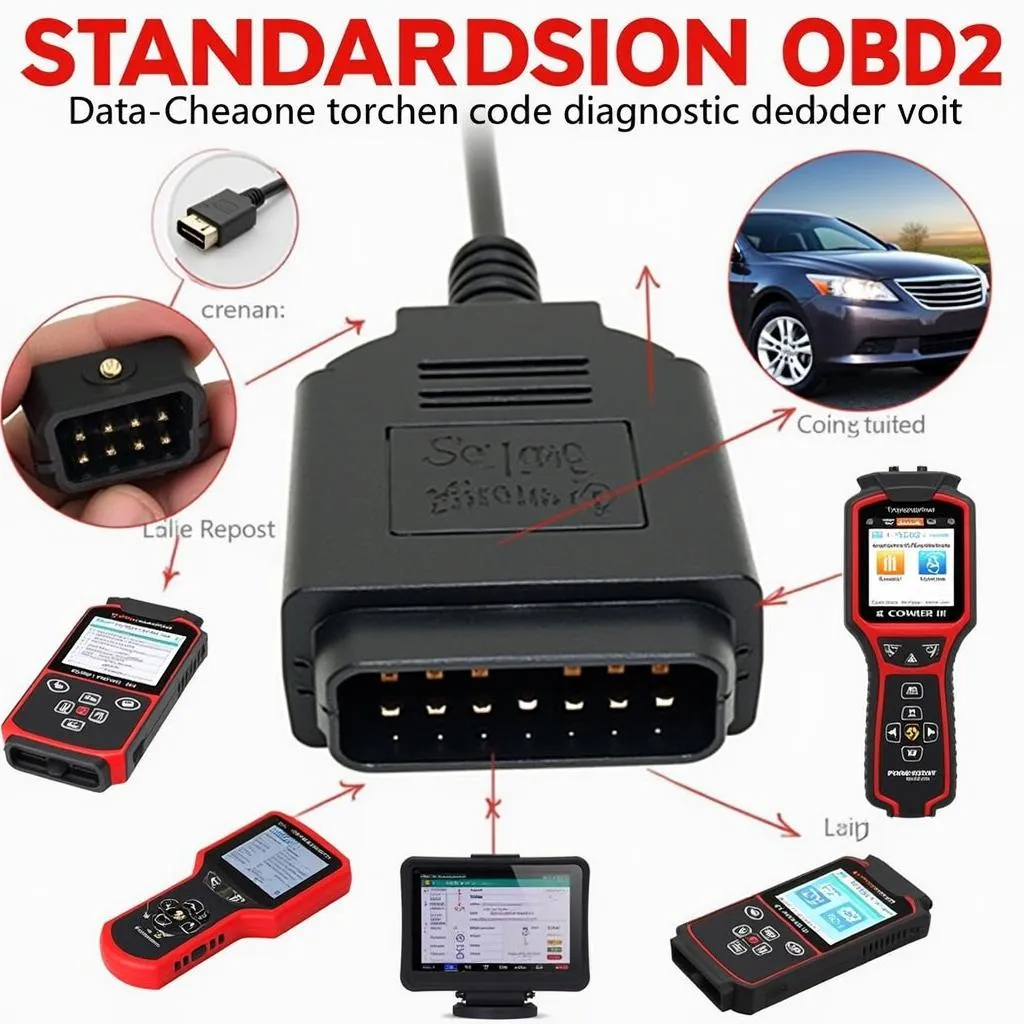The evolution of automotive technology has brought about significant changes, including how we diagnose and address vehicle issues. The introduction of On-Board Diagnostics (OBD) systems revolutionized car repairs, providing valuable insights into a vehicle’s health. This article delves into a comprehensive comparison of OBD1 and OBD2 systems, exploring their functionalities, benefits, and the significant changes they brought to the automotive industry.
A Look Back at OBD1: The Precursor to Modern Diagnostics
OBD1 systems emerged in the late 1980s as a response to growing concerns about vehicle emissions. The primary focus of OBD1 was to monitor and control emissions-related components, ensuring compliance with increasingly stringent regulations.
Unlike the standardized OBD2, OBD1 lacked uniformity across different car manufacturers. Each automaker developed its own proprietary connectors, protocols, and diagnostic trouble codes (DTCs). This lack of standardization made it challenging for mechanics to diagnose issues across different vehicle makes and models, requiring specialized equipment and knowledge for each brand.
OBD2: The Standardized Revolution in Car Diagnostics
Introduced in 1996, OBD2 marked a significant leap forward in automotive diagnostics. This standardized system mandated a universal connector, communication protocol, and DTC format across all vehicle manufacturers. This standardization revolutionized car repairs, allowing mechanics to diagnose and troubleshoot issues in any OBD2-compliant vehicle, regardless of make or model.
Key Differences Between OBD1 and OBD2:
The transition from OBD1 to OBD2 brought about significant improvements in car diagnostics, offering enhanced capabilities and greater accessibility for mechanics and car owners alike. Let’s delve into some of the critical distinctions between these two systems:
Standardization:
- OBD1: Proprietary systems, different connectors and codes for each car manufacturer.
- OBD2: Standardized across all makes and models, simplifying diagnostics and repair.
Diagnostic Capabilities:
- OBD1: Limited to monitoring emissions-related components, providing basic diagnostic information.
- OBD2: Expanded coverage to include a broader range of vehicle systems, offering more comprehensive diagnostics.
Connector Type:
- OBD1: Various connector types and locations depending on the car manufacturer.
- OBD2: Universal 16-pin connector located within reach of the driver.
Data Richness:
- OBD1: Limited data points and primarily focused on emissions-related information.
- OBD2: Provides a wealth of data, including engine performance, transmission, ABS, airbags, and more.
The Impact of OBD2 on the Automotive Landscape
The standardization ushered in by OBD2 transformed the automotive industry, empowering car owners and mechanics with accessible and comprehensive diagnostic capabilities. Here’s how OBD2 has reshaped the automotive landscape:
- Simplified Diagnostics: Mechanics can now easily diagnose and repair vehicles from various manufacturers, eliminating the need for specialized equipment for each brand.
- Increased Accessibility: The universal connector and standardized DTCs allow car owners to utilize affordable OBD2 scanners to diagnose their vehicles, fostering a better understanding of their car’s health.
- Improved Repair Efficiency: Access to detailed diagnostic information enables mechanics to pinpoint issues quickly and efficiently, reducing repair times and costs.
- Enhanced Emission Control: OBD2’s comprehensive monitoring of emissions-related components ensures cleaner vehicles and reduced environmental impact.
OBD1 and OBD2: A Testament to Automotive Progress
While OBD1 systems played a crucial role in the early stages of emissions control, OBD2’s standardization marked a pivotal advancement in automotive diagnostics. Its widespread adoption has not only simplified repairs and improved efficiency but also empowered car owners with greater transparency into their vehicles’ health.
FAQs:
1. Is my car OBD1 or OBD2?
You can determine your car’s OBD system by checking the vehicle’s emission sticker under the hood. Look for “OBD II certified” or check your owner’s manual.
2. Can I use an OBD2 scanner on an OBD1 car?
No, OBD2 scanners are incompatible with OBD1 systems. You’ll need a specialized scanner designed for your car’s specific make and model.
3. What are the benefits of using an OBD2 scanner?
OBD2 scanners can help you identify and understand the “check engine” light, access various vehicle data, monitor fuel economy, and perform basic diagnostics.
4. Are all OBD2 scanners the same?
OBD2 scanners vary in features and functionality. Basic models read and clear codes, while advanced scanners offer real-time data, graphing, and other advanced features.
5. Where can I learn more about OBD1 and OBD2 for my specific car model?
You can find valuable information about OBD systems in your vehicle’s owner’s manual.
Need Help with Your Vehicle Diagnostics?
For expert assistance with your car’s OBD system, whether it’s understanding trouble codes or finding the right diagnostic tools, OBDFree is here to help. Contact us through WhatsApp: +1(641)206-8880, or Email: [email protected]. Our dedicated team of automotive experts provides 24/7 support to answer your questions and guide you toward the information you need.
Explore our website for a wealth of resources, in-depth articles, and reviews on various OBD2 scanners to make informed decisions about your vehicle’s diagnostic needs. OBDFree is your trusted source for all things OBD2.


